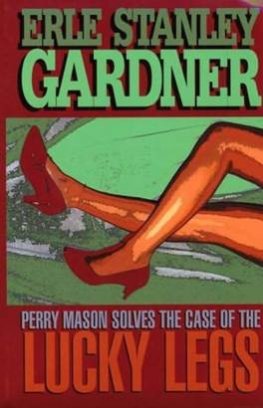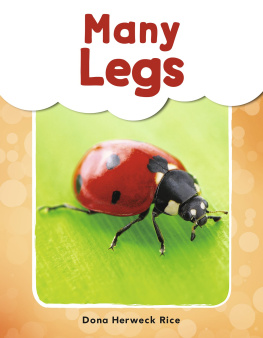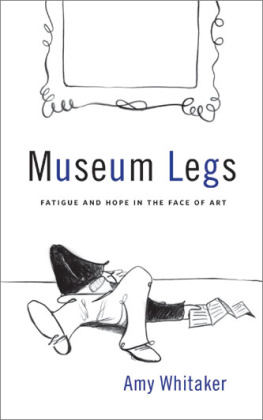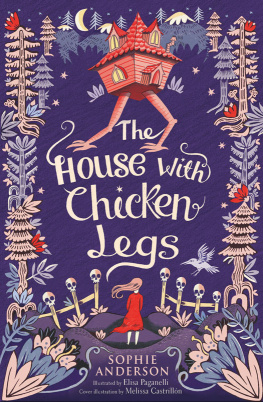The Roots of My
OBSESSION
The Roots of My OBSESSION
Thirty Great Gardeners Reveal Why They Garden

Thomas C. Cooper, Editor

CONTENTS
| Thomas C. Cooper
| Tony Avent
| Thomas Christopher
| Rosalind Creasy
| William Cullina
| Rick Darke
| Page Dickey
| Helen Dillon
| Ken Druse
| Sydney Eddison
| Fergus Garrett
| Nancy Goodwin
| Susan Heeger
| Daniel J. Hinkley
| Thomas Hobbs
| Penelope Hobhouse
| Panayoti Kelaidis
| Roy Lancaster
| Tovah Martin
| Julie Moir Messervy
| Stephen Orr
| Anna Pavord
| Anne Raver
| Margaret Roach
| Marty Ross
| Claire Sawyers
| Amy Stewart
| Roger B. Swain
| Douglas W. Tallamy
| Richard G. Turner, Jr.
| David Wheeler

Introduction
Thomas C. Cooper
There are at least thirty reasons that people end up as gardeners. The essays that follow are proof of that. In fact, the motivations are far more numerous. A few folks seem born with a seed clutched in their fists; others make the choice deliberately, having ruled out banking or triathlons. But for most people, including the authors of this book, their transformation into gardeners is evolutionary, the result of years, often generations, of small unnoticed actions, the way a piece of land is shaped by wind, rain, sunshine, and the antics of man, until it has been changed entirely. The accounts in the pages beyond, by many of todays finest garden writers, are portraits of that metamorphosis.
I was raised on a strain of gardening that combined the minor virtues of engineering, math, Cold War chemistry, and internal combustion. My parents were a part of the victory garden generation, raised in an era when farming touched most recent family histories, and those who had some land naturally grew food and flowers as part of their genetic makeup, not as an exercise in outdoor decorating. People were comfortable with the land and the tools for working it. Families had Ball jars on their shelves and big freezers in the basement. A power outage meant more than losing an unsaved email; it put the summers beet crop, stored in neatly stacked white cartons, at risk. Gardening was a tangible and often essential part of life, which was lived closer to the ground.
My father was the gardener in our family (my mother was the freezer, canner, and cook), and he was an active one. I dont know where he acquired the urge, although there was a family farm (with a water wheel and an Indian farmhandhe lived in a teepee, we were told) in Monsey, New York, some thirty-five miles northwest of Manhattan. It was a rolling, open landscape in the early days of the twentieth century, when lime was just gaining popularity. Whatever the instigating factors, by the time I was born my dad had developed a lifelong interest in tinkering with nature. Before moving from New York City to Vermont, my home ground, he had absorbed night courses in agriculture at Columbia University, owned and run an apple orchard upstate in Red Hook, and collected many of the USDAs yearbooks as well as a goodly library of their instructive bulletins (Vegetable Gardeners Handbook on Insects and Diseases, Potatoes in Popular Ways, Mulches for Your Garden, and Root Vegetables for Everyday Meals among them). His copy of Maurice Kainss classic 1940 back-to-the-land primer, Five Acres and Independence, sat on a bookshelf behind his desk, ready for consultation and an inexhaustible source of inspiration.
With schooling as an engineer and a farmer, my father envisioned a garden as something carried out on well-tilled, rock-free ground (to the degree that condition can be achieved in northern New England, where stones rise up endlessly), rows aligned with all the precision a theodolite could impart, and seeds planted at exact intervals according to a notched sugar maple yardstick. A garden could contain many crops, but it ought to be square and true. Its supports should be tall and strong. Ours were made of oak shafts rejected for use in the construction of surveyors tripods. We set their holes with a crowbar and drove them home with a five-pound sledge. The rows of beans and peas ran straight, the chicken wire taut.
There were actually two gardeners in my household. The other was James Underwood Crockett, the kindly gentleman who gained fame (among gardeners) in the mid-1970s as the down-to-earth host of PBSs Crocketts Victory Garden, as the show was originally called. Whether on TV or in his several gardening books, what Crockett said went, from how deep to plant an asparagus root (eight inches) to when to apply the diazinon (he was a firm believer in better living through chemistry). When he switched tomato varieties, we did too. His books sat on a bookshelf in the kitchen for ready reference. Well after his death, when my wife and I moved to our current home, my father built us one of Crocketts three-bin Brown Gold Cadillac composters as a housewarming present.
My role in our familys gardens was as a farmhand, picking out rocks and tossing them into the black plastic buckets stationed at the row ends, harvesting peas or corn to take in to my mother for processing, pulling weeds. As my brother and I grew we took on mowing duties, wrestling a massive two-winged Locke reel mower around the lawn as it threw up a spray of clippings that released the fresh scent of summer and turned your sneaker toes green. The mowing was followed by trimming work with the hand clippers (a fiendish device that I could only manage with two hands for a number of years). Sometime in high school I took on the Troy-Bilt rototiller, helping to keep the edges of the asparagus bed fluffed and weed-free. I still admire a crisply cut edge or a well-weeded stretch of soil almost as much as I do a tapestry of perennials in full flight.
Some thirty years working among gardeners as an editor added new tools and new approaches to my work on the land. I discovered a world often without straight lines, generally without chemicals, one where flowers and vegetables shared equal billing. Any plant was fair game in achieving ones private paradise. The place where I grew up and still garden is overrun with lilac cultivars (my fathers doing), but there is a heptacodium, a weeping katsura, and a Swiss stone pine.
Marketers have tried for decades to identify what makes a gardener in hopes of brewing up a large batch of it and sowing it, through advertising, across the land. It has never worked, and many who dreamed of getting rich by making gardeners have lost their shirts. Gardeners are a blend of family and geography, of childhood wonder and even sometimes the independence born of the parental neglect that allows a child to get lost in the woods, tracing the source of a springtime rivulet. They rise from trauma and travel. People come to gardening for the refuge of a personal Eden, endlessly complex in its makeup, gloriously simple in its demands.
The world of the small family farm and neat vegetable gardens carved into every backyard is fading rapidly. Some people lament this decline. Yet if one looks beyond the dense thicket of McMansions, there are plenty of gardeners carrying on with fruits and vegetables, trees, shrubs, and flowers. Their roots stretch back to Mr. Crockett and beyondto plant hunters like E. H. Wilson, gardeners like Thomas Jefferson and Vita Sack-ville-West, layouts like the courtyards of Persia. Each story, like the ones in this volume, is different in its particularsthe disconcerting discoveries of an Irish childhood leading to the sanctuary of the greenhouse; love affairs with colchicums, alpines, orchids, or trees; a return to vegetable-growing; a lifetime raising fruit but each is familiar in its goals and appreciations of a greener world.
Next page













